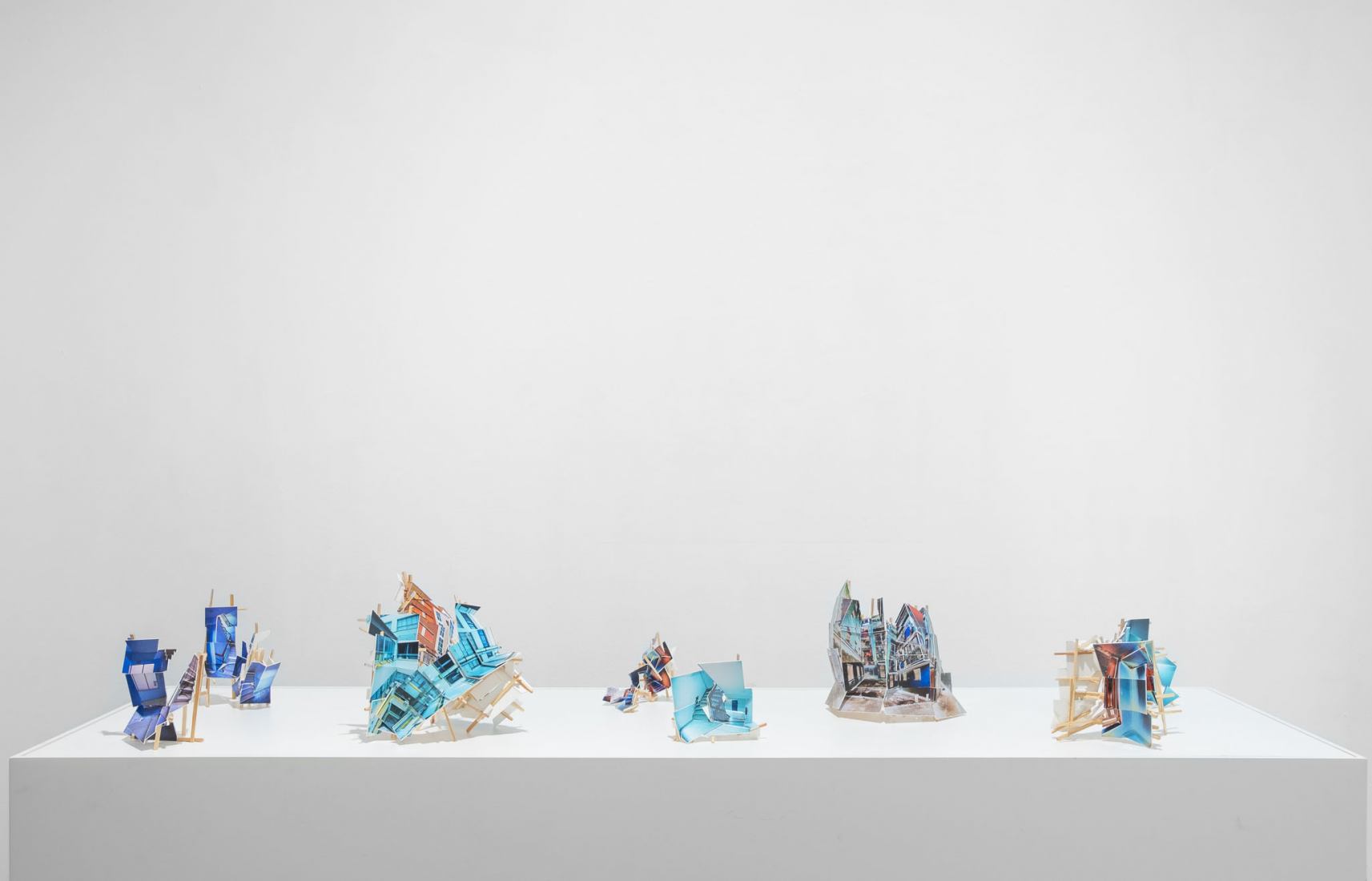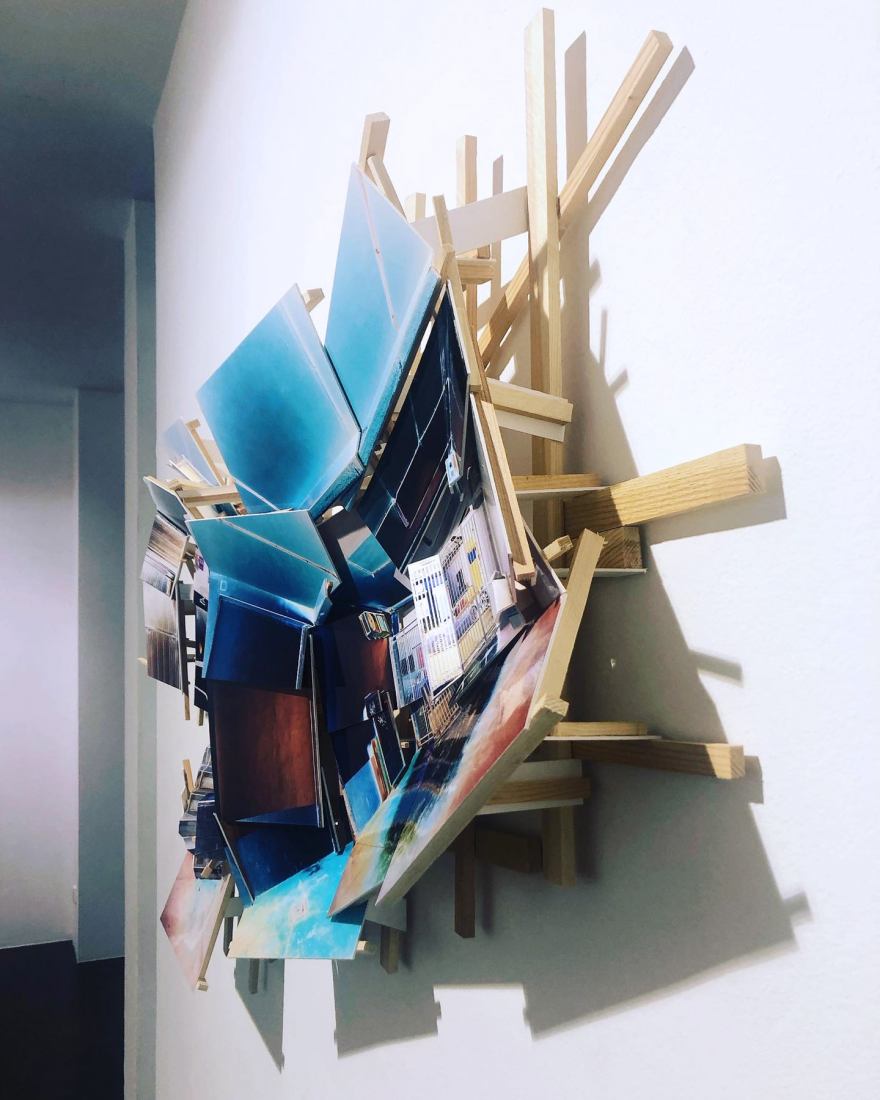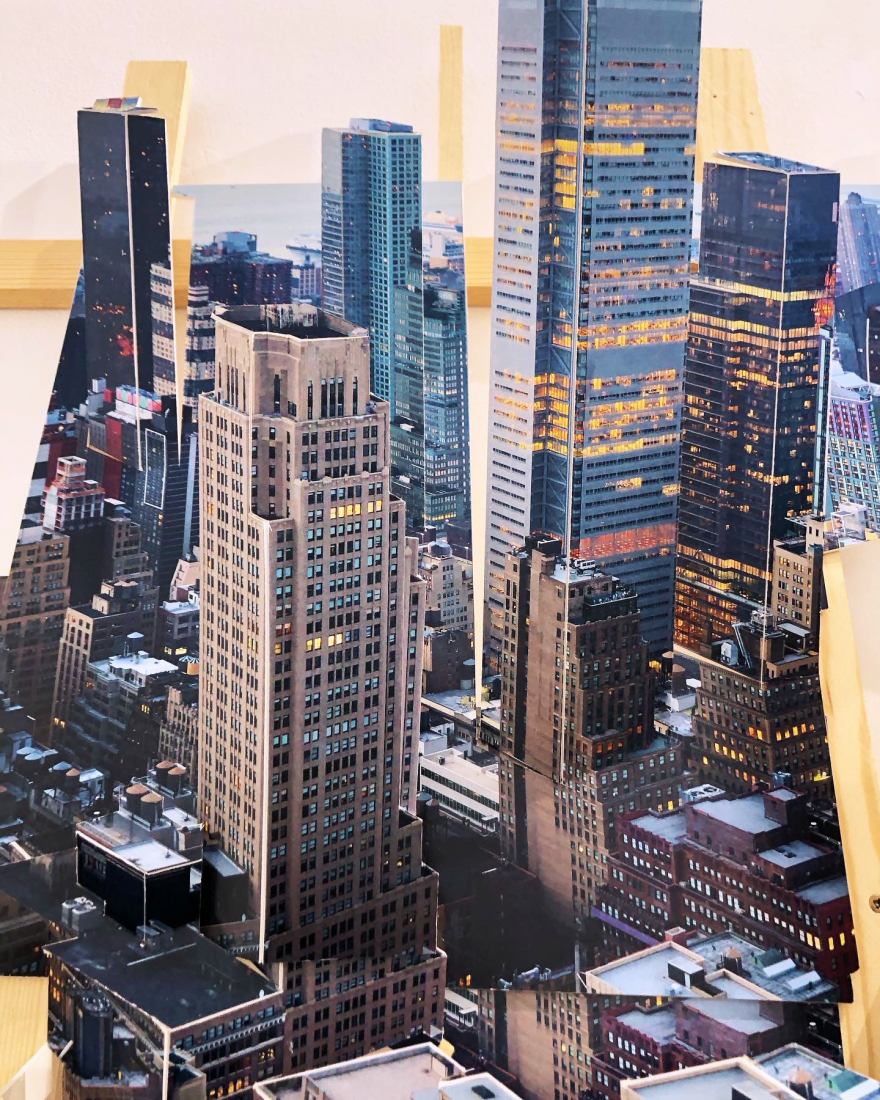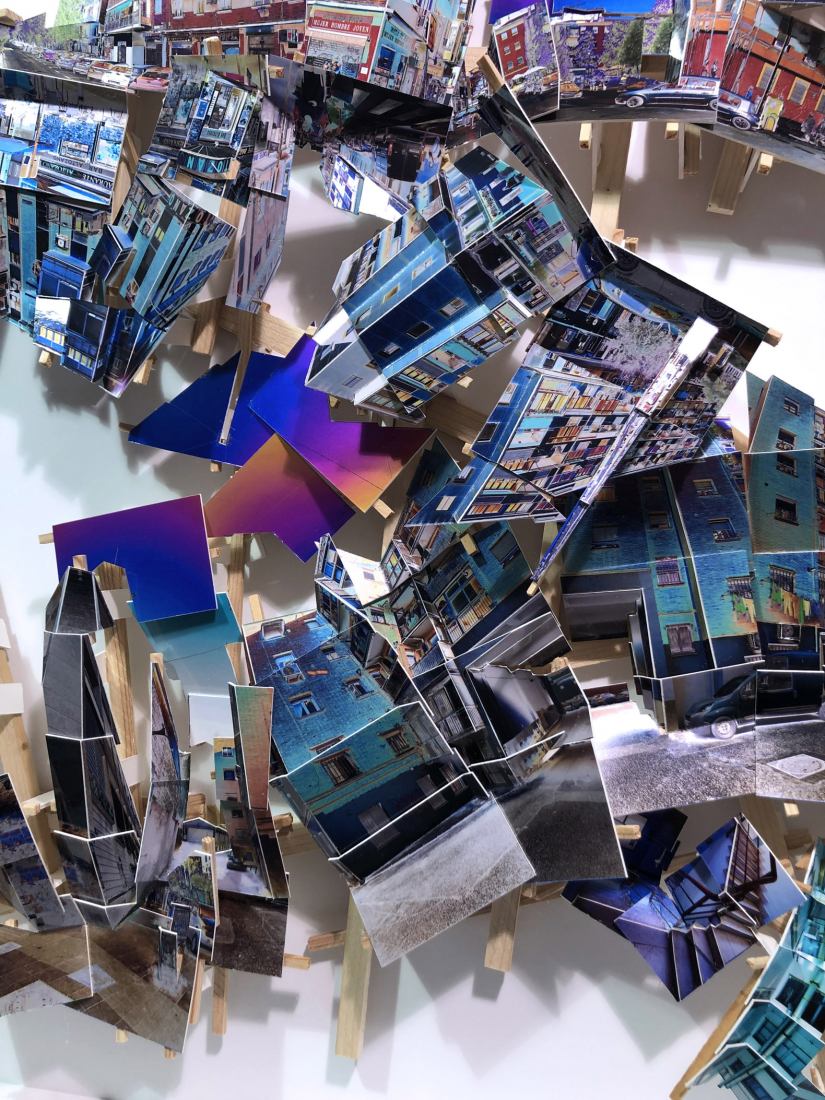But in this series, although volume is undoubtedly a factor, it is not what the collection is about. In the artist's own words, "it is a return to classical sculpture". And really, looking at this series of variations on the surface of the sculpture itself, we can understand it as such. The structures are dynamic, conveying movement; they even insinuate foreshortening through the twisting of wood in combination with images. It is, ultimately, a revisitation; a return to the hallmarks of classical Hellenic sculpture, through a contemplative odyssey that reflects the artist's own inner conflicts, his desire to investigate, to take the spirit of his work further.

Aerial New York, 120x120x15 cm. "Surface variations" by Isidro Blasco.
At the same time, and introducing the previously mentioned concept of “-isms", Blasco's work moves towards cubism in its most cryptic stage. His structures, previously preserved and recognisable - the infinite cities, the chopped-up planes, the raised buildings, the streets, the squares and the people - lose all definition. The colours become predominantly negative. In past conversations about his work, Blasco has referred to the alteration of colours as relating to the subjectivity of the viewer's own memory. Here, as in a Greek sculpture, it passes into polychromy merely for the sake of ornamentation. The search for aesthetics beyond form. The alteration of reality in favour of expression in a kind of tinting process that comes very close to abstraction through the colour and content of the image. In the same manner, Blasco's previously ordered and recognisable structures lose all logic.
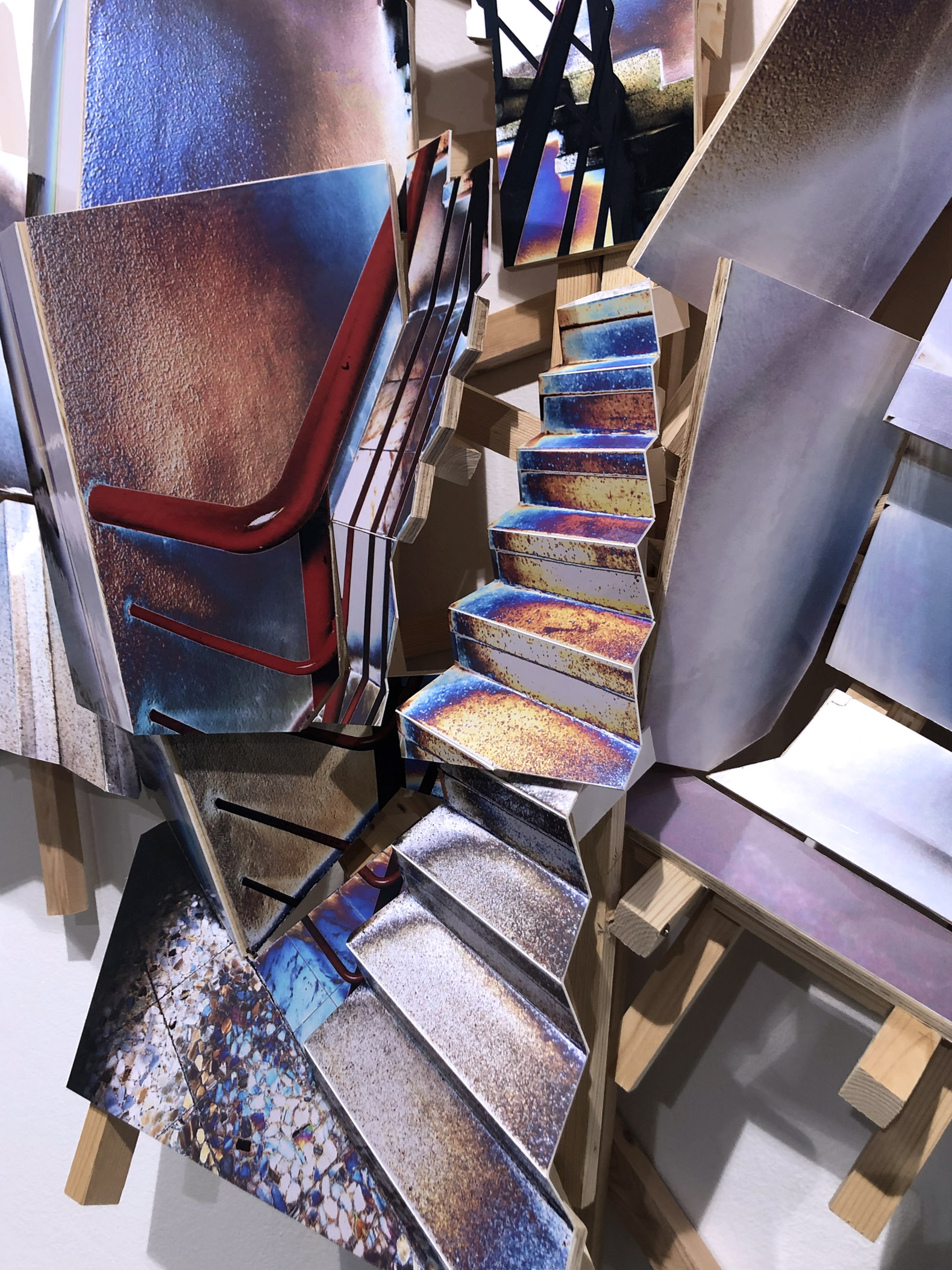
Subida de Belmonte, (detail) 217x177x37 cm. "Surface variations" by Isidro Blasco. Courtesy of Isidro Blasco.
We find ourselves upside down in Isidro's world, unable to walk through his sculptures as before. Order vanishes to give way to a much more singular phenomenon: discovery. The non-obviousness of the image excites our imagination: on a journey of discovery, we bend over, twist our necks, squat down, squint our eyes, imitating the torsion and movement of the object we are contemplating. Is this series by Isidro Blasco perhaps a sculpture about dreamlike spaces? Maybe it is the realisation of a surrealist sculpture (surrealism).
We have returned to sculpture's most classical values, but, like Ulysses in Homer's Odyssey, Blasco brings us a transformed sculpture. It is the journey through all these centuries, trawling through the artist's own experience, that brings all this change in its wake. The evolution of concepts and ideas is, if we dedicate ourselves to art from the heart, inevitable.








